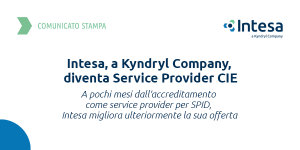Electronic invoicing in Europe: what is it and when does it come into effect?
Forthcoming mandatory reporting of cross-border transactions in the EU
From 2028 it will be mandatory to report cross-border B2B transactions in Europe. The ‘race to adapt’ is underway in member states, and Italian companies that trade with other EU countries will have to abide by the applicable regulations in their trading partners’ countries.
In questo articolo scoprirai:
Is the EU preparing for e-invoicing? The answer would seem to be yes. There has been no direct statement from the Commission, but in recent months revisions and amendments have been made to the current regulations that appear to be preparing the ground for mandatory B2B e-invoicing within the EU. An operation of this magnitude, however, takes time, and some preliminary stages are required not only to define the technical specifications, but also to adapt VAT legislation.
Read also: International Invoicing? We take care of everything
What is European e-invoicing and why are we talking about it?
There is no full-blown electronic invoicing system in Europe at the moment, but there are many signs that the obligation for member states to report cross-border transactions electronically is imminent.
First of these is the proposal to revise the VAT regulations at European level: VAT in the Digital Age, Directive 2006/112/EC was released on 8 December 2022.
Two particular amendments to the proposal have attracted the attention of insiders.
- The introduction of a mandatory reporting system for transactions within the EU. The system will likely be based on electronic invoicing, the specifications and technological architecture of which are still being worked out.
- From 2025, member states will be able to abolish the clause that requires prior agreement from customers before issuing electronic invoices rather than paper ones.
- The elimination of article 232 of the VAT Directive, by which member states are currently required to obtain a derogation to make electronic invoicing mandatory for B2B and B2C. Abolishing this requirement will make it easier for countries to introduce the obligation for electronic invoicing without first requesting authorisation from the EU, and electronic invoicing can be considered the default method rather than paper invoices.
It is highly likely, however, thatit will be mandatory for B2B transactions only between EU countries, and remain optional for domestic transactions.
Why are we talking about ‘European electronic invoicing’?
The EU Directive on VAT (2006/112/EC) will be 17 years old in 2023, and an update to bring it more closely in line with innovations that have taken place in recent years (Brexit, the advent of e-commerce, etc.) has been hoped for and expected for some time.
But what has finally ‘convinced’ the EU to update the reporting procedures are the latest figures on tax evasion in cross-border commercial transactions, which put losses at 50-70 billion euros per year. To overcome the problem and simplify VAT monitoring, the EU has apparently decided to standardise and digitise the processes. By reforming the regulations, it is estimated that around 11 billion euros in VAT payments will be recovered across Europe each year*.
Introducing the obligation will also facilitate the creation of the Digital Single Market and interoperability between states.
Read also: Why prepare for international (and European) e-invoicing?
When does e-invoicing comes into effect in Europe?
It takes time to introduce an obligation at EU level since the different member states need time to adjust. However, all member states will be able to impose the general obligation for electronic invoicing – which must comply with EU technological standards – from 2024, with no need for prior authorisation, and the other changes to the ViDA will gradually come into effect from 2025. The changeover will be 2028, when it will become mandatory to report intra-EU B2B transactions.
How to prepare for European e-invoicing
As far as domestic invoicing in Italy is concerned, there should be no substantial impact until 2028 since the Interchange System is already able to process electronic invoices compliant with European standards.
Nonetheless, the ‘race to adapt’ has already started among member states that have not yet introduced mandatory B2B electronic invoicing, so Italian companies that trade with other EU countries will need to track changes to the regulations in countries where their commercial partners are based. Bulgaria, Romania, Serbia, Poland and Belgium are expected to introduce B2B electronic invoicing by 2023, followed by France, Slovakia, Finland, Denmark and Spain between 2024 and 2025.
The partnership between Pagero and Intesa: we take care of everything
To support customers and Italian companies through the adjustments linked to international electronic invoicing, language barriers and different time zones, Intesa has joined forces with Pagero, a global business network.
On the international e-invoicing platform you can navigate the introduction of electronic invoicing across the different countries, using the roadmaps that national regulations have set out and creating a smart business network that ensures compliance with e-invoicing and LTA (long-term archiving) regulations, whatever your business sector and geographical area.
Download the paper for more details.
*European Commission, Questions and Answers: VAT in the Digital Age




